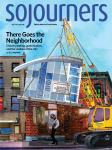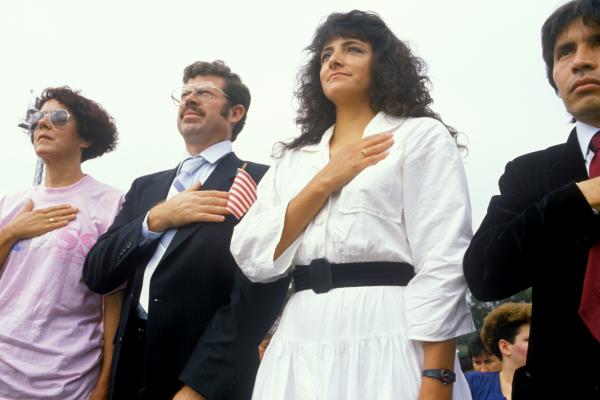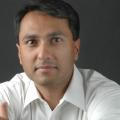IN HIS RECENT book American Covenant, Philip Gorski writes, “To be part of a tradition is to know certain stories, read certain books, admire certain people, and care about certain things. It is to knowingly enter into an ongoing conversation, a conversation that precedes one’s birth and continues on after one’s death.”
The civil religious tradition was first invoked regarding the United States by sociologist Robert Bellah in 1967. Bellah spoke of it as the “religious dimension” of the “political realm” and the “founding myth” of our national community. It stands separate from people’s traditional faiths but draws freely from religious language to sacralize national symbols.
Gorski is quick to point out that civil religion is neither religious nationalism nor radical secularism. The first is the odious manipulation by one religious group of national symbols and political instruments to dominate others. The second requires a muzzling of the inspirations and expressions of too many Americans, and would leave out much of our most admired figures and most cherished history. “Imagine Lincoln’s or King’s or Obama’s speeches shorn of all religious references,” Gorski says. “Civic poetry would be transformed into political doggerel.”
At its best, civil religion creates what Justice Felix Frankfurter referred to as “cohesive sentiment” in a diverse nation. But it is a participatory and dynamic process. It is not as if the narrative exists in heaven somewhere and drops bridges of cooperation into diverse neighborhoods and schools. Rather, changes occur on the ground—in demographics, in attitudes, in events—and then we discover that our civil religion narrative no longer connects our past with our present and our hoped-for future in a satisfactory way. So we listen to new voices, we add some symbols and deemphasize others, elevate these stories and demote those, and reinterpret the whole narrative so that we continue being America, or rather, become a better America.
This whole process serves poetic purposes, but it serves practical ones as well. In his landmark study of American diversity, E Pluribus Unum, Harvard social scientist Robert Putnam, generally liberal in his political leanings, discovered that “people living in ethnically diverse settings appear to ‘hunker down’—that is, to pull in like a turtle.” In other words, as diversity increased, the qualities that typically characterize strong community decreased. The higher the diversity, the more people distrusted their neighbors, and the less they volunteered and gave to charity.
While the inverse correlation between diversity and community in the study cannot be denied, Putnam points out that it need not be inevitable either. One key, in his view, to putting increased diversity and strengthened community on the same path is to shape a national narrative that creates what his Harvard colleague Diana Eck calls “a wider sense of we.”
Whatever our current challenges might be, it is a good bit easier to engage in this process in the U.S. than in, say, France, Germany, or Spain. As racist and xenophobic as our past (and, some would say, our present) might be, we were not conceived as an ethno-state in the manner of most European nations. There is no ethnicity called American in the way that French, Spanish, and German are ethnicities, with associated ways of being, believing, and belonging. We can reasonably point to our founding documents, from the Flushing Remonstrance to the Declaration of Independence and the Constitution, and say, “See, this is a nation for all people.”
Gorski claims that the religious dimensions of American civil religion are drawn from the Judeo-Christian tradition, specifically the Old and New Testaments. Only those texts? If religious language and symbols play a key role in American civil religion, and if America is getting more religiously diverse, then the obvious question is, how will other sacred texts and religious vocabularies be incorporated into our evolving civil religion?

Got something to say about what you're reading? We value your feedback!

